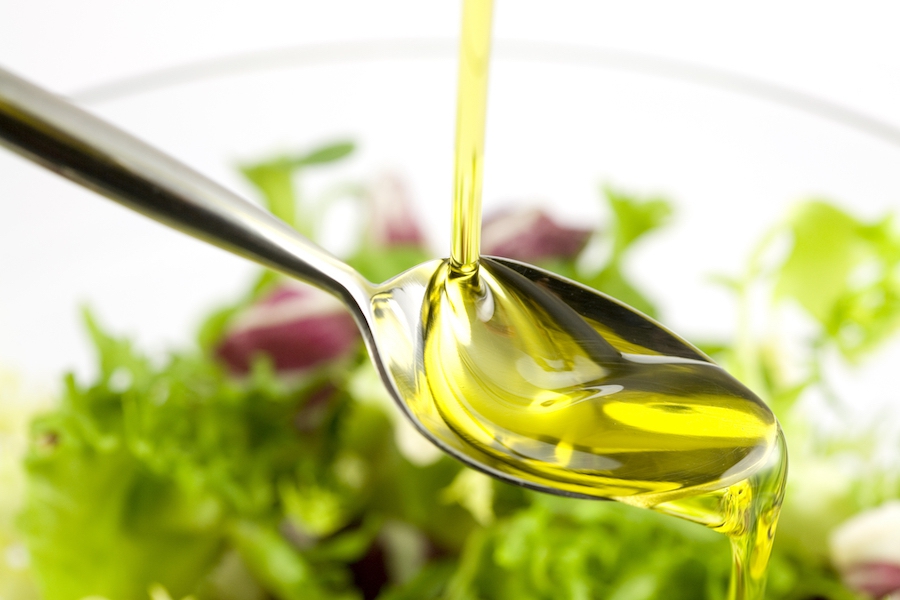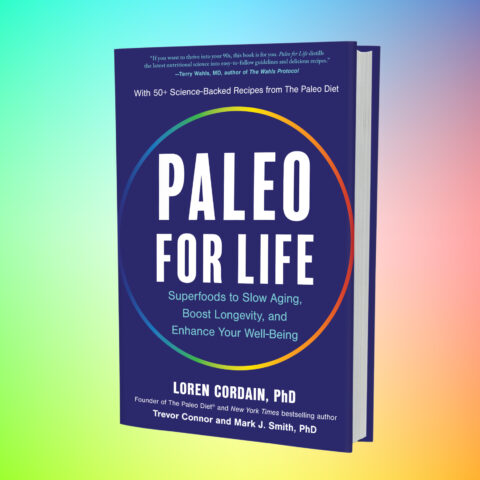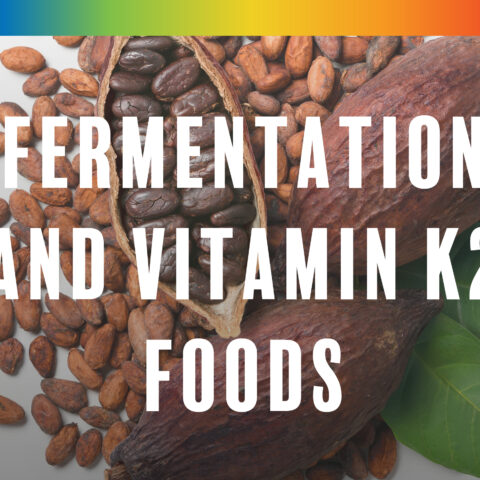How Much Linoleic Acid Do You Need?

Reviewed by Dr. Mark J. Smith on November 29, 2021.
Medical doctors run lipid panels on their patients in an effort to assess cardiovascular disease (CVD) risk, the single largest contributor to total mortality.
The following has essentially become gospel in the medical community: dietary saturated fat (SFAs), such as palmitic acid, are mostly considered harmful due to the fact that they can elevate LDL cholesterol—long considered the major causal factor in cardiovascular disease. Polyunsaturated fats (PUFAs) like linoleic acid are thought to be beneficial due to their LDL-cholesterol-lowering effects.
The less saturated the fat, the healthier it is according to the medical establishment.
Hence, dietary fats from plants have generally been recommended over animal fats by physicians. Animal fats are predominantly high in monounsaturated fats (MUFAs) and SFAs, but low in linoleic acid. Plant fats, especially seed oils, are predominantly high in linoleic acid and MUFAs, but low in SFA.
From a Paleo perspective, a diet low in linoleic acid is more familiar to our bodies and, therefore, most likely healthier.
What are PUFAs, SFAs, and MUFAs?
Plants and animals make PUFAs, SFAs, and MUFAs. PUFAs are generally less abundant in our food than MUFAs and SFAs.
All fats are essentially chains of carbons held together by chemical bonds. The bonds in saturated fats are all single bonds, which is why they are considered “saturated.” Unsaturated fats, such as PUFAs and MUFAs, have at least one double bond—just one in the case of MUFAs.
This type of bond gives these molecules kinks or bends, causing them to not be completely straight and rigid. The more double bonds (or unsaturated) the fat is, the more oily it is. It’s also more easily damaged by environmental factors such as heat, friction, or light. This is why you can leave butter, an SFA, on the counter, but should protect your olive oil, a MUFA, in dark containers at a cool temperature and away from sunlight.
Since SFAs have no double bonds linking their chains of carbon, only single bonds, they are straight and rigid. For comparison, coconut oil is approximately 90 percent SFA by calories, while ribeye [1] is approximately 18 percent, bacon [2] 29 percent, and olive oil [3] and mackerel [4] are both approximately 14 percent.
MUFAs and then SFAs make up the large majority of fat calories in human diets. Animal foods predominantly contain saturated and monounsaturated fats, and generally in similar proportions.
Dietary PUFAs come in two primary forms: omega-3 and omega-6, named for the location of their first double bond. Certain PUFAs are considered essential because we have to get them from our diets. While we won’t tackle the complexities in this article, the essential forms of omega-6 and omega-3 fatty acids are called arachidonic acid (AA) and docosahexaenoic acid (DHA), respectively. [5]
What is linoleic acid (LA)?
LA, an omega-6 PUFA, is the most abundant PUFA in our food, coming mostly from plant foods. For example, beef from a grain fed Simmental bull is approximately 7.7 percent omega-6 PUFAs by calories, of which two thirds is linoleic acid or approximately 5.2 percent of total fat. [6]
Soybean oil, on the other hand, is approximately 55 percent LA, more than seven times that of grain-fed beef. Restaurants virtually always deep fry foods in high linoleic acid oils like corn oil or soybean oil.
The impact of different dietary fats on ROS production and insulin resistance
Oxygen is needed to make energy from fat. When our energy factories (mitochondria) metabolize fats, reactive oxygen species (ROS) are produced.
ROS are like feedback for mitochondria. Your fat cells sense ROS concentrations to figure out how much energy can be allowed into the cell. [7] The hormone insulin causes fat cells to take up fat from circulation. So, the more ROS that’s produced, the more fat cells resist the action of insulin. The converse is true.
The rise of linoleic acid in the western diet
The current dietary guidelines (set for 2020 to 2025) [8] for Americans emphasize that a healthy diet should contain no more than 10 percent of total calories as SFA. This is the equivalent of approximately five teaspoons on a 2,000 kcal diet. In fact, the government recommends using olive oil or margarine instead of butter, and supplementing with 1.5 to 2 tablespoons per day of cottonseed oil for women and 2 to 2.5 for men.
In the early 2000s, linoleic acid was approximately 6.7 percent of Americans’ total calories. [9] Another estimate found that between 1909 to 1999 linoleic acid increased from 2.7 percent to 7.1 percent of the diet. [10]
A more recent estimate from 2013 pegged the average intake at 7.7 percent and climbing. [11] The authors noted how, “linoleic acid rich PUFA food sources have provided an increasingly larger portion of total fat intake in the U.S. since 1965 [while] total fat intake in the U.S. has decreased substantially over time.”
Indeed, the estimated per capita consumption of soybean oil increased more than 1,000 times during the 20th century.
Practically speaking, and looking at experimental science, high linoleic acid seed oils like soybean oil and corn oil should be avoided in favor of animal fats that are high in MUFAs and SFAs.
What do scientific experiments say about linoleic acid?
Although plant foods were eaten by our ancestors, the diet humans have evolved on consisted of mostly fatty animal foods, like ruminants (i.e. cows) which contain lots of MUFAs and SFAs and very little linoleic acid (omega-6 PUFAs.) From a Paleo perspective, a diet low in linoleic acid is more familiar to our bodies and, therefore, most likely healthier.
While we’ll look closely at several randomized-controlled trials (RCTs) below, the punchline can be found in Steven Hamley’s meta-analysis of RCTs looking at replacing SFAs with LA. He concludes that, “replacing SFA with mostly n-6 PUFA is unlikely to reduce CHD events, CHD mortality, or total mortality.” [12]
The Sydney-Diet Heart trial re-analysis
A re-analysis of the Sydney diet heart trial qualifies as the highest quality evidence for the health effects of LA, from safflower in this case. [13] It’s a randomized controlled trial over seven years (1966-1973) of 458 men aged 30-59 years with an all-cause mortality outcome who had a recent coronary event. The higher linoleic acid group saw a 17.6 percent increased all-cause mortality compared to 11.8 percent in controls (p = 0.05). Interestingly, this fits with the fact that linoleic acid has many toxic breakdown products. [14]
The ‘overfeeding sunflower or palm oil muffins’ study
Participants in this seven-week free-living overfeeding randomized trial ended up eating an average of 3.1 muffins per day made with either sunflower oil, which is higher in linoleic acid, or palm oil, which is higher in SFAs. [15]
Both groups gained weight, but the sunflower oil group gained more lean mass than the palm oil group. The latter gained 1.5 kilograms of body fat while the sunflower oil group gained 0.97 kilograms. The sunflower oil group also gained less liver fat and visceral fat.
Understanding the context is key here: Participants were purposely overfed, so the saturated fat group was overriding the natural “I’m full!” signal that their bodies would otherwise listen to in a real-life scenario. Furthermore, they couldn’t keep overfeeding themselves indefinitely.
Comparing two RCTs using different fat sources
In this study, 14 people were fed a portion of plain pasta, brown bread, and a yogurt with the addition of either butter, refined olive oil, high-palmitic sunflower oil, or a mixture of vegetable and fish oils. [16]
The dosing of fat was unusually precise, measured in grams per square meter of body surface area (just like what is done when using toxic chemotherapy regimens). The study found that the more saturated the fat source, the higher the insulin levels, triglycerides, and free fatty acids in the blood.
Another RCT referred to as the ‘butter vs peanut butter’ study was much less precise in its dosing, providing four different breakfasts: cottage cheese and toast with or without butter or peanut butter. It found that both fat sources actually blunted the insulin response to two pieces of white bread. [17] The type of fat didn’t matter as the insulin response from the bread was overwhelming whatever minor differences there may have been between the fats.
How do we explain the contrary results? The first study was carefully designed to not contain too much carbohydrate or protein, as this would overwhelm relatively minor differences between fats in terms of insulin levels following the meal. The second study was more representative of meals people actually eat, showing fats generally blunt insulin responses. So if you know what you’re doing, you can manipulate results to show the result you want.
Lyon-Diet Heart study
The Lyon-Diet Heart study randomized close to 4,000 men who had already had a coronary event to either the standard (control) diet with 5.3 percent linoleic acid or to a so-called Mediterranean diet with 3.6 percent linoleic acid. [18] The diets differed in many other aspects and in their lifestyle—it wasn’t well controlled. [19]
The control group died at a rate of 1.74 per 100 person years compared to 0.95 in the Mediterranean diet group (p = 0.03). We cannot know where the benefit came from, but it doesn’t seem like linoleic acid improved mortality.
Blood clotting study
A 21-day RCT with healthy non-smoking males suggests that linoleic acid from olive oil—which can vary from 10.7 percent to 19.47 percent [20]—worsens the clotting responses as measured by fibrinogen compared to the SFA from butter and to the omega-3 PUFAs EPA and DHA when added to olive oil. [21]
All subjects were fed the SFA diet (10 percent LA) for three weeks and then randomized to receive either the omega-3 diet (12 percent LA) or omega-6 diet (17 percent LA) for three weeks following an eight-week washout period.
Then treatment sequences were reversed. Here, triglyceride levels after the meal increased more in the linoleic acid group than the two others. Interestingly, the coagulation factor VII was more activated in the linoleic acid and omega-3 groups, but not the SFA one. Given the importance of clotting in myocardial infarctions, this suggests that people with a history of them may be better off with less rather than more dietary LA.
The bottom line
The amount of linoleic acid anatomically modern humans ate throughout the evolutionary span ranged from two percent to less than eight percent of total calories (if mammoth carcasses are any indication). [22]
Given the trend of increasing linoleic acid consumption, Americans have likely crossed that eight percent. Practically speaking, and looking at experimental science, high linoleic acid seed oils like soybean oil and corn oil should be avoided in favor of animal fats that are high in MUFAs and SFAs.
References
- Beef, rib, eye, small end (ribs 10-12), separable lean only, trimmed to 0″ fat, choice, raw [Delmonico, ribeye] Nutrition Facts & Calories. https://nutritiondata.self.com/facts/beef-products/3273/2
- Pork, cured, bacon, raw Nutrition Facts & Calories. https://nutritiondata.self.com/facts/pork-products/2208/2
- Olive oil, salad or cooking. https://nutritiondata.self.com/facts/fats-and-oils/509/2
- Fish, mackerel, Atlantic, raw. https://nutritiondata.self.com/facts/finfish-and-shellfish-products/4072/2
- Masterjohn C. How Essential Are the Essential Fatty Acids? 2008 How Essential Are the Essential Fatty Acids?
- Daley C, Abbott A, Doyle P, Nader G, Larson S. A review of fatty acid profiles and antioxidant content in grass-fed and grain-fed beef. Nutrition Journal. 2010;9(1). A review of fatty acid profiles and antioxidant content in grass-fed and grain-fed beef. https://www.ncbi.nlm.nih.gov/p…;
- Speijer D. Can All Major ROS Forming Sites of the Respiratory Chain Be Activated By High FADH2/NADH Ratios?. BioEssays. 2018;41(1):1800180. Can All Major ROS Forming Sites of the Respiratory Chain Be Activated By High FADH2/NADH Ratios?
- Health.gov. Dietary Guidelines 2020-2025. Dietary Guidelines 2020-2025. https://www.dietaryguidelines….;
- Trumbo P, Schlicker S, Yates A, Poos M. Dietary Reference Intakes for Energy, Carbohydrate, Fiber, Fat, Fatty Acids, Cholesterol, Protein and Amino Acids. Journal of the American Dietetic Association. 2002;102(11):1621-1630. Dietary Reference Intakes for Energy, Carbohydrate, Fiber, Fat, Fatty Acids, Cholesterol, Protein and Amino Acids. https://pubmed.ncbi.nlm.nih.go…;
- Blasbalg T, Hibbeln J, Ramsden C, Majchrzak S, Rawlings R. Changes in consumption of omega-3 and omega-6 fatty acids in the United States during the 20th century. The American Journal of Clinical Nutrition. 2011;93(5):950-962. Changes in consumption of omega-3 and omega-6 fatty acids in the United States during the 20th century. https://pubmed.ncbi.nlm.nih.go…;
- Raatz S, Conrad Z, Jahns L. Trends in linoleic acid intake in the United States adult population: NHANES 1999–2014. Prostaglandins, Leukotrienes and Essential Fatty Acids. 2018;133:23-28. Trends in linoleic acid intake in the United States adult population: NHANES 1999–2014.
- Hamley S. The effect of replacing saturated fat with mostly n-6 polyunsaturated fat on coronary heart disease: a meta-analysis of randomised controlled trials. Nutrition Journal. 2017;16(1). The effect of replacing saturated fat with mostly n-6 polyunsaturated fat on coronary heart disease: a meta-analysis of randomised controlled trials
- Ramsden C, Zamora D, Leelarthaepin B, Majchrzak-Hong S, Faurot K, Suchindran C et al. Use of dietary linoleic acid for secondary prevention of coronary heart disease and death: evaluation of recovered data from the Sydney Diet Heart Study and updated meta-analysis. BMJ. 2013;346(feb04 3):e8707-e8707. Use of dietary linoleic acid for secondary prevention of coronary heart disease and death: evaluation of recovered data from the Sydney Diet Heart Study and updated meta-analysis
- Spiteller G, Afzal M. The Action of Peroxyl Radicals, Powerful Deleterious Reagents, Explains Why Neither Cholesterol Nor Saturated Fatty Acids Cause Atherogenesis and Age-Related Diseases. Chemistry – A European Journal. 2014;20(46):14928-14945. The Action of Peroxyl Radicals, Powerful Deleterious Reagents, Explains Why Neither Cholesterol Nor Saturated Fatty Acids Cause Atherogenesis and Age-Related Diseases. https://pubmed.ncbi.nlm.nih.go…;
- Rosqvist F, Iggman D, Kullberg J, Cedernaes J, Johansson H, Larsson A et al. Overfeeding Polyunsaturated and Saturated Fat Causes Distinct Effects on Liver and Visceral Fat Accumulation in Humans. Diabetes. 2014;63(7):2356-2368. Overfeeding Polyunsaturated and Saturated Fat Causes Distinct Effects on Liver and Visceral Fat Accumulation in Humans. https://pubmed.ncbi.nlm.nih.go…;
- López S, Bermúdez B, Pacheco Y, Villar J, Abia R, Muriana F. Distinctive postprandial modulation of β cell function and insulin sensitivity by dietary fats: monounsaturated compared with saturated fatty acids. The American Journal of Clinical Nutrition. 2008;88(3):638-644. Distinctive postprandial modulation of β cell function and insulin sensitivity by dietary fats: monounsaturated compared with saturated fatty acids. https://pubmed.ncbi.nlm.nih.go…;
- Collier G, Wolever T, Jenkins D. Concurrent ingestion of fat and reduction in starch content impairs carbohydrate tolerance to subsequent meals. The American Journal of Clinical Nutrition. 1987;45(5):963-969. Concurrent ingestion of fat and reduction in starch content impairs carbohydrate tolerance to subsequent meals. http://www.ncbi.nlm.nih.gov/pu…;
- de Lorgeril M, Salen P, Martin J, Monjaud I, Delaye J, Mamelle N. Mediterranean Diet, Traditional Risk Factors, and the Rate of Cardiovascular Complications After Myocardial Infarction. Circulation. 1999;99(6):779-785. Mediterranean Diet, Traditional Risk Factors, and the Rate of Cardiovascular Complications After Myocardial Infarction. https://pubmed.ncbi.nlm.nih.go…;
- de Lorgeril M, Salen P, Caillat-Vallet E, Hanauer M, Barthelemy J, Mamelle N. Control of bias in dietary trial to prevent coronary recurrences: The Lyon diet heart study. European Journal of Clinical Nutrition. 1997;51(2):116-122. Control of bias in dietary trial to prevent coronary recurrences: The Lyon diet heart study
- El Riachy M, Hamade A, Ayoub R, Dandachi F, Chalak L. Oil Content, Fatty Acid and Phenolic Profiles of Some Olive Varieties Growing in Lebanon. Frontiers in Nutrition. 2019;6. Oil Content, Fatty Acid and Phenolic Profiles of Some Olive Varieties Growing in Lebanon
- Sanders T, Oakley F, Miller G, Mitropoulos K, Crook D, Oliver M. Influence of n-6 versus n-3 Polyunsaturated Fatty Acids in Diets Low in Saturated Fatty Acids on Plasma Lipoproteins and Hemostatic Factors. Arteriosclerosis, Thrombosis, and Vascular Biology. 1997;17(12):3449-3460. Influence of n-6 versus n-3 Polyunsaturated Fatty Acids in Diets Low in Saturated Fatty Acids on Plasma Lipoproteins and Hemostatic Factors
- Guil-Guerrero J, Tikhonov A, Rodríguez-García I, Protopopov A, Grigoriev S, Ramos-Bueno R. The Fat from Frozen Mammals Reveals Sources of Essential Fatty Acids Suitable for Palaeolithic and Neolithic Humans. PLoS ONE. 2014;9(1):e84480. The Fat from Frozen Mammals Reveals Sources of Essential Fatty Acids Suitable for Palaeolithic and Neolithic Humans




